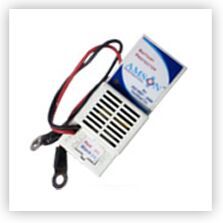
Battery Protector
Get Price Quote
Each time a battery is discharged some of the sulfuric acid in the electrolyte is converted to lead sulfate crystals which form on the plates. These crystals interfere with the chemical rea -ction necessary for proper battery operation. When the battery is recharged MOST (but not all) the sulfates are reconverted back into sul -furic acid. This is why a discharged battery will have a low Specific Gravity (SG) reading. Over time the sulfates which are not reconstit -uted as acid form stubborn patches of large crystal growths that will grow and eventually choke the life out of a lead acid battery. These crystal growths if not stopped will act like ice expanding the cases (bulges), breaking the plates and plate and cell interconnects and causing shorts. The usual practice in maintaining a battery in good condition is to apply a periodic equalization charge over and above what would be a normal full charge. Unfortunately, this is an energy wasting tactic. It ultimately results in clean battery plates, but at a steep price, especially if the energy must come from a generator.If badly sulfated batte -ries are treated, it is convenient to use a trickle charger of one or two amps.In this case, the simplest way to see that the circuit is havin -g an effect is to note that the terminal voltage actually drops each day as the batteries slowly charge. This is a result of the internal resistance of the cells decreasing as the plates become slowly cleared of the sulfate,and more useful plate area comes in contact with the electrolyte. Also,the specific gravity of the cells begins to rise slowly, evidence that the sulfate is going back into solution.To further check the progress you could do a discharge test, using a known load, to determine the useful capacity. This would involve measuring the length of time taken by the load to drop the battery voltage from a high level to a low level. If you repeat this test, a gradual lengthening of this interval should be noted.